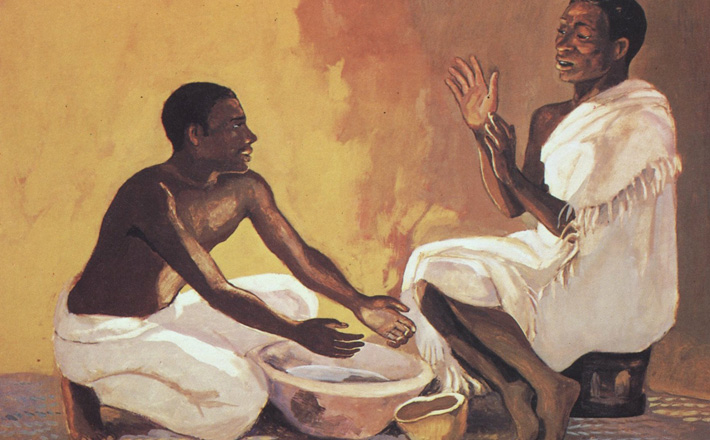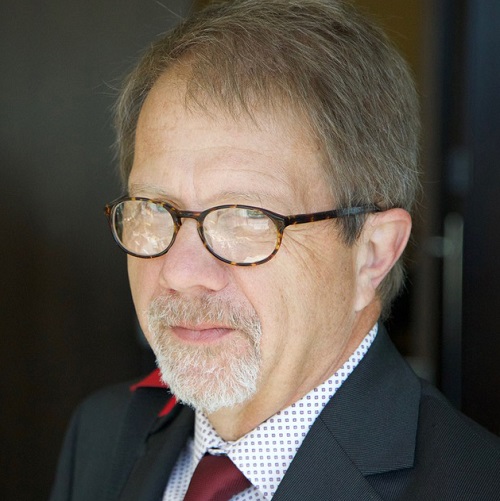Commentary on Psalm 116:1-2, 12-19
Conversations are part of human experience. Verbal and non-verbal communication begins even before we take our first breath and occurs long after we’ve breathed our last. Conversations move among us, through us, and within us and even happen while we are sleeping.
Rapid Eye Movement (REM) sleep is a place of conversation about our thoughts with our own thoughts. It is the place of dreams where imaginations are free to fly, swim, run, walk, and even gain super identities or live as if in virtual space. WebMD claims, “You can have intense dreams during REM sleep, since your brain is more active. REM is important because it stimulates the areas of the brain that help with learning and is associated with increased production of proteins”.1 Equally important is non-REM sleep since it is the place where bodies rest and repair themselves. A different type of communication is happening within. WebMD further asserts, “During the deep stages of NREM sleep, the body repairs and regrows tissues, builds bone and muscle, and strengthens the immune system”. Deep sleep is often a place of molecular and cellular communication. It is also a place where one’s own anxieties and fears may be faced.
Our bodies communicate within us and with others each day of our existence. Even in the solitude of desert landscapes and wilderness places our bodies are communicating and interacting with the physical and spiritual. People of faith contend that ways of communication are not limited to the observable world. They involve spiritual, physical, and emotional communication with that which is most true in all three spheres. Some cultures claim communication may occur with sacred beings or entities, with ancestors who have died, and with the created world itself.
Psalm 116 invites those who sing its poetic lines to move into places where perspectives, about what is and is not, are broadened, deepened, and expanded. The writer affirms that God hears the voice of those who cry out and are in need. The writer’s theology moves with a certainty that God is present in the moments when we need God most and present in moments imperceptible to human vision or awareness. Perhaps it is something like oxygen that flows into our bodies through our nostrils, throat, and lungs. Most of the time we are unaware of the movement happening, and if we are aware of the movement, it is unlikely that we can feel the oxygen molecules passing through our lung membranes into our bloodstream and flowing through us. In the same way, we don’t recognize the carbon dioxide molecules being expelled by our lungs through our throat and nostrils.
The mystery of life bound up in respiration and the transfer of molecules within us happens every day of our existence and most of the time we are unaware of it or of what it is doing within us and for our wellbeing. Polluted air, or any air for that matter, carries carcinogens, viruses, and various toxins that may be initially imperceptible to us, yet over time can have debilitating consequences that may even cause our demise. God’s presence is ubiquitous, and it is this presence that gives life and life abundant.
The question of God’s goodness and gracious gifts permeates the lines of Psalm 116 and invites us to see farther and deeper into the magnitude of God’s gifts to the world. Oxygen for breathing. Light for seeing. Sound waves, voices, and music for hearing. Touch for feeling textures, surfaces, and shapes. Taste to explore a range of flavors that abound on the created world. It is as if the Psalm writer is invoking people to remember that God loves the diversity of the senses and of the planet which God has created and invites everyone to experience the vast wonder and beauty of it all. With recognition of the vastness of blessings discerned, a spirit of thanksgiving ensues.
The practice of thankfulness is something that gets better with observation and practice. When my daughters were young, my wife and I practiced with them a daily ritual over dinner or before bedtime of thankfulness for what they had experienced that day. We would take turns naming three things for which we were thankful. As one can imagine, the answers covered a wide range of topics and words of thanks to God for the gifts we had received. Sometimes coming up with three things was difficult. However, I cannot remember an occasion in which three things were not named. It was a simple spiritual practice that helped put things in perspective for each of us as we traveled through our respective worlds and it prompted a sense of wellbeing.
Thanksgiving to God for all that God has done, is doing, and will do can stimulate deeper relationship with the living God and prompt desires for doing that which aligns with the law of God and the aims of God for what makes a life worth living and what brings about a deeper sense of human flourishing.
The declarations of the Psalmist affirm an ongoing relationship with a God who is both beyond knowing and, at the same time, is closer to us than breathing. The writer claims, “I will lift up the cup of salvation and call on the name of the LORD. I will fulfill my vows to the LORD in the presence of all his people. I will sacrifice a thank offering and call on the name of the LORD. I serve you just as my mother did. I will fulfill my vows to the LORD in the presence of all his people.” The faith conviction of the writer sings of a relationship with God that involves all of one’s existence and invites a communal understanding of that relationship.
The cup of salvation is echoed in the New Testament and finds expression in Christian congregations with the celebration of the Eucharist or Lord’s Supper. It is at its core a declaration that salvation comes to people as a gift of God. The Psalmist notion of lifting this cup of salvation suggests a ritual action associated with thanking God. It is unclear, however, about how and in which season it happened, and at what point in a ritual of thanks it occurred. It resonates with the commemoration of Passover and yet, it cannot be definitively tied to it. Although we cannot declare with certainty a specific Jewish ritual association, we can see it as a literal or figurative act that asserts an awareness of a God who is intimately concerned about the wellbeing of people. It declares a faith recognition in a God who fills the cup with the possibility of salvation as being the same God who preserves life and gives hope and life meaning. For this, there is thanksgiving.
Notes
- https://www.webmd.com/sleep-disorders/sleep-101


April 14, 2022